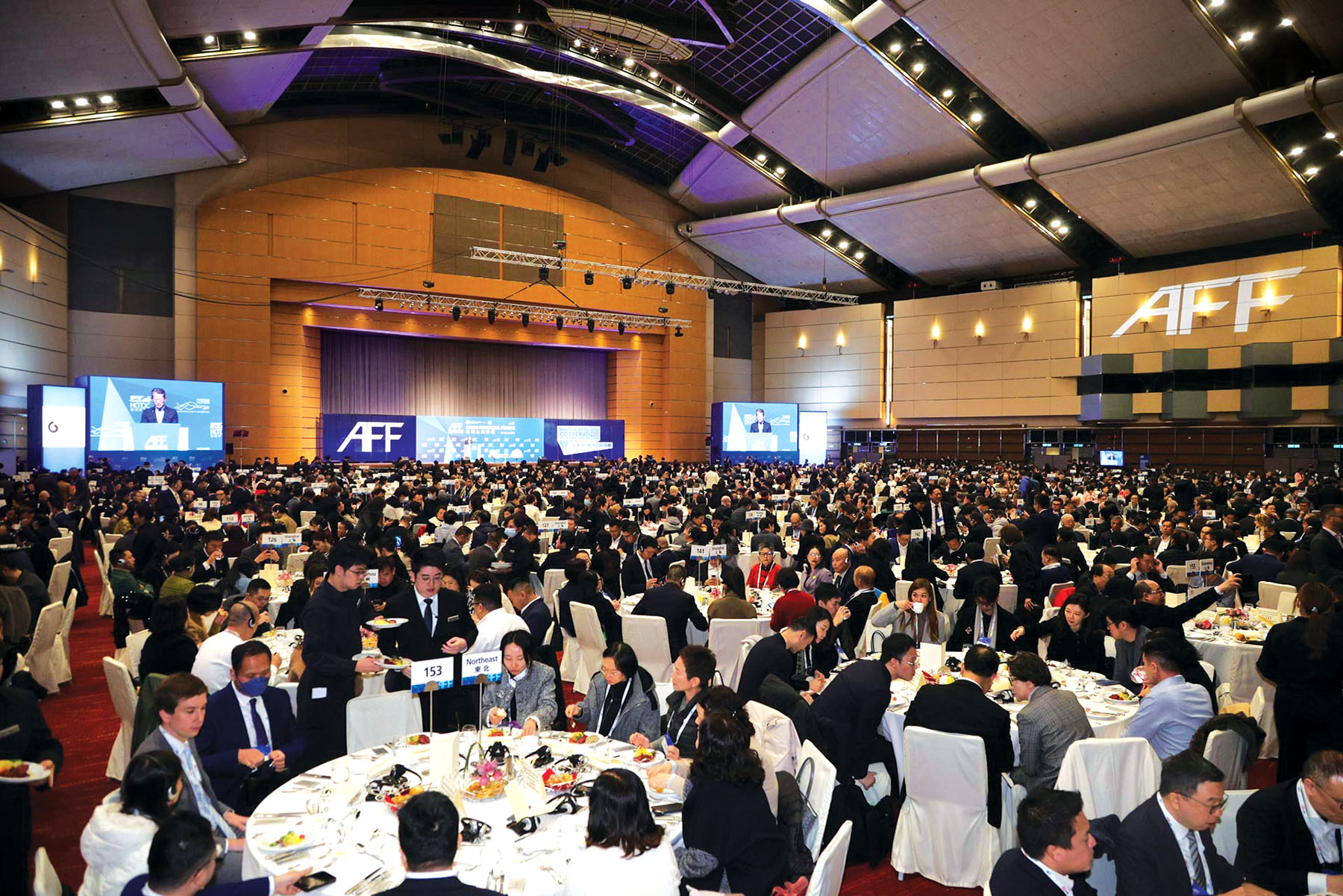The 18th Asian Financial Forum will take place in Hong Kong on Monday and Tuesday to explore global investment trends, challenges and opportunities.
In an interview with China Daily, Chen Liang, chairman of China International Capital Corp Ltd, representing the event’s Gold Sponsor, emphasizes China’s innovation imperative, the synergy of Asian economies, and Hong Kong’s unique role in regional development within the Guangdong-Hong Kong-Macao Greater Bay Area.

Q: Against the backdrop of global economic recovery, how do you see the importance of “innovation” in driving a new wave of growth?
A: At CICC, we have always paid close attention to global economic trends and China’s economic transformation. We believe that in the context of global recovery, China faces both opportunities and challenges. Innovation is no longer optional — it has become the essential path and core driver for achieving a new round of steady growth in China. Its significance is reflected in three key areas:
First, innovation is a “must-have” for domestic economic transformation and upgrading. China is entering a phase of high-quality development, with evident consumption upgrades and rising aspirations for better living standards. People’s demand for high-quality, personalized products and services continues to grow. Meanwhile, breakthroughs are still required in certain key technologies. Innovation is the only pathway to advance the industrial structure toward higher value-added sectors, achieve technological self-reliance, and meet people’s growing needs for a better quality of life, ultimately realizing high-quality development.
Second, innovation is the “key strategy” to enhance international competitiveness. Amid significant changes in globalization, technological competition has emerged as a focal point of major power rivalries. Shifts in the global innovation chain require China to strengthen its independent innovation capabilities. Through innovation, China can enhance its position in global industrial chains, build a new development pattern that prioritizes domestic economic circulation while promoting international economic circulation, and better navigate external challenges.
Third, innovation is the “entry ticket” to seize opportunities from the artificial intelligence-driven technological revolution. The new wave of technological revolution, represented by AI, is sweeping the globe, profoundly transforming production methods, lifestyles, and social governance while reshaping the global industrial landscape. In this revolution, failure to innovate means being left behind. China must actively embrace new technologies like AI, increase investment in research and development, and integrate these innovations with the real economy. This will foster new industries, business models, and economic growth drivers, ensuring that China maintains its competitive edge in future international competition.
In summary, innovation is China’s “core engine” and “vital pathway” for achieving sustainable and high-quality growth during the next phase of global economic recovery. At CICC, we are committed to supporting national strategies, fostering the development of innovative enterprises, and driving the effective allocation of innovation resources. Looking ahead, we will continue to leverage our strengths to contribute to building an innovative nation and a global science and technology powerhouse. Together with all sectors of society, we aim to promote high-quality growth for China’s economy and secure its future in an increasingly competitive global environment.

Q: In the current complex and volatile global economic environment, how do you view the importance of “collaboration” among Asian countries in achieving shared growth and prosperity?
A: Asia accounts for approximately 50 percent of the global economy and 60 percent of the world’s population, making the region’s prosperity and development crucial to the global landscape. Asia’s diversity and inclusiveness, given the large number of countries within the region, underscore the importance of collaboration. I’d like to highlight three points regarding the role of collaboration:
First, the differences in economic development stages and resource endowments among Asian countries provide a natural foundation for collaboration. For example, Japan, South Korea, and Singapore are economically advanced and have strong capital accumulation. China boasts a complete industrial chain and robust upstream-downstream capabilities. India and Southeast Asian countries benefit from a large workforce and low labor costs, while Central Asia and parts of Southeast Asia are rich in oil and gas resources. These diverse industrial structures and resource endowments create significant potential for cross-border cooperation, enabling mutual benefit and win-win outcomes for all countries involved.
Second, collaboration helps address risks and challenges in today’s uncertain global landscape. The international economy faces numerous challenges, and regional cooperation can drive development that aligns with both Asian and global interests. By 2025, global trade and growth prospects may face new disruptions. Through collaboration, Asian countries can identify new growth points, cultivate competitive advantages, and seize opportunities from the next wave of technological and industrial revolutions, thereby unlocking new momentum for sustainable prosperity.
Third, Asia already has a solid foundation for cooperation, with past successes offering valuable lessons for the future. Regional cooperation mechanisms such as the ASEAN Community, “China-Japan-South Korea + X” initiatives, and the Asia Cooperation Dialogue have established frameworks for coordination among Asian countries. The Regional Comprehensive Economic Partnership (RCEP), encompassing 15 Asia-Pacific nations and celebrating its third year of implementation, has significantly advanced free trade across the region. Strengthening collaboration remains the key path for Asian nations to achieve shared growth and prosperity.
Q: As a model of economic cooperation in Asia, how can Hong Kong leverage its advantages to promote regional collaboration and prosperity in the Guangdong-Hong Kong-Macao Greater Bay Area?
A: Hong Kong is one of the central cities in the Guangdong-Hong Kong-Macao Greater Bay Area and an important global financial hub. Within the framework of “one country, two systems”, Hong Kong’s competitive advantages and service capabilities are becoming increasingly prominent. Moving forward, Hong Kong can promote regional collaboration and prosperity in three areas:
First, strengthening connectivity mechanisms with the Chinese mainland. Leveraging existing initiatives such as the Shanghai-Hong Kong and Shenzhen-Hong Kong Stock Connect programs, as well as the Cross-boundary Wealth Management Connect in the Greater Bay Area, Hong Kong can deepen the two-way opening-up of capital markets. This, combined with its role as an offshore renminbi hub, will enhance the Greater Bay Area’s appeal to global capital.
Second, advancing financial innovation in technology and green finance. By expanding the supply of financial products and services, innovating transaction and settlement methods, and improving regional capital allocation efficiency, Hong Kong can integrate technological innovation resources across the Greater Bay Area. This will facilitate information sharing, talent mobility, and the exploration of cutting-edge technologies, driving sustainable development in the region.
Third, effectively managing financial risks is crucial for ensuring regional stability. Hong Kong can strengthen its financial infrastructure and enhance risk management mechanisms to maintain the stability of its currency’s linked exchange rate system. Additionally, bolstering the presence of Chinese-funded financial institutions in Hong Kong will sustain the vitality of its capital markets and improve the financial system’s resilience against risks.


